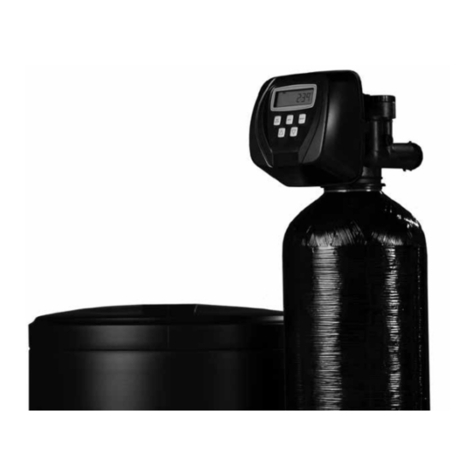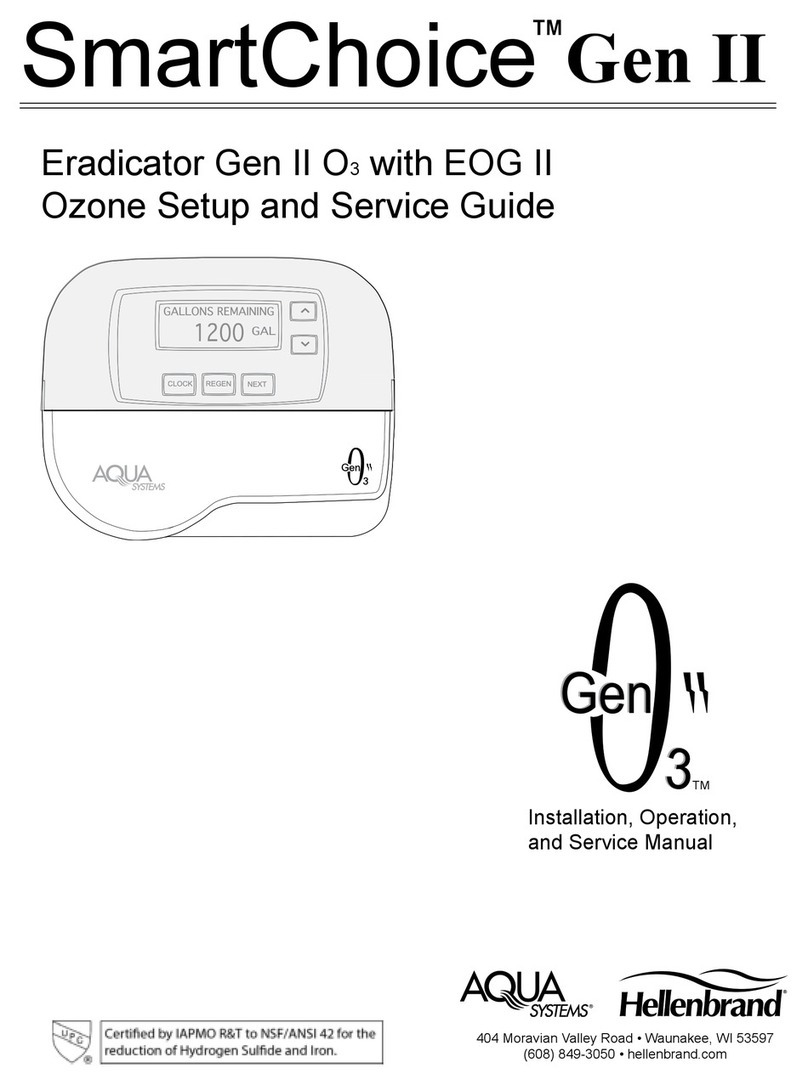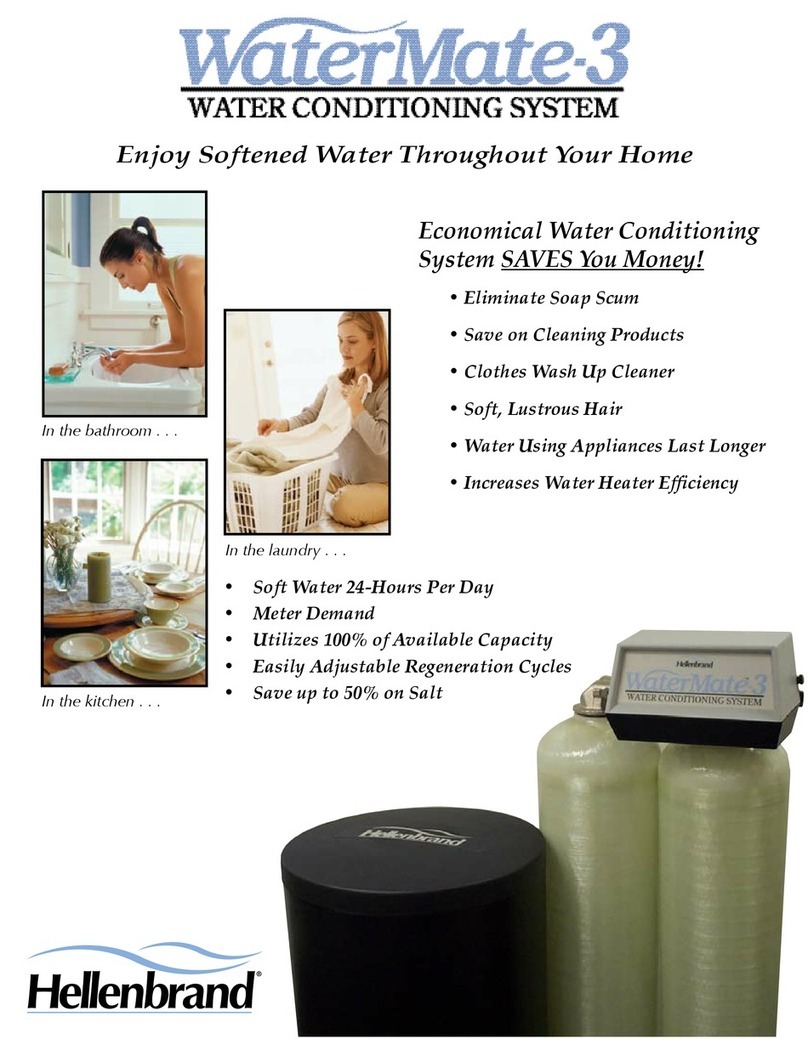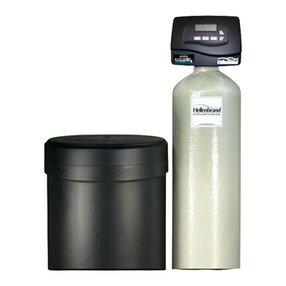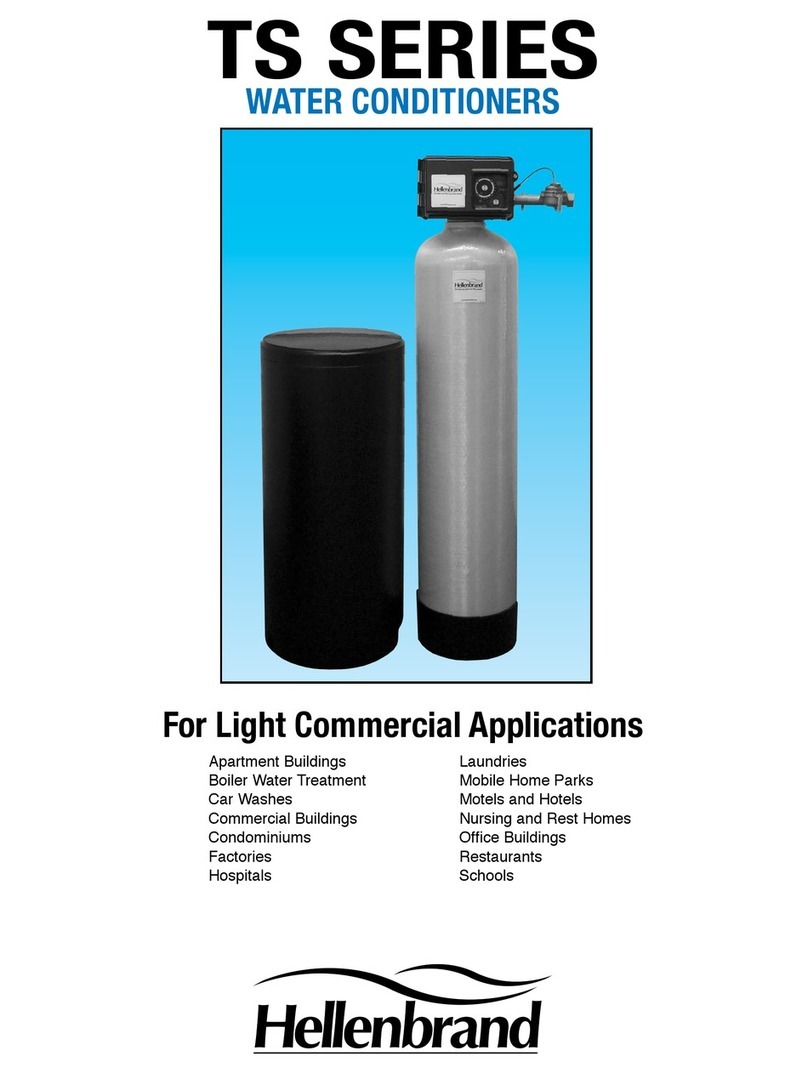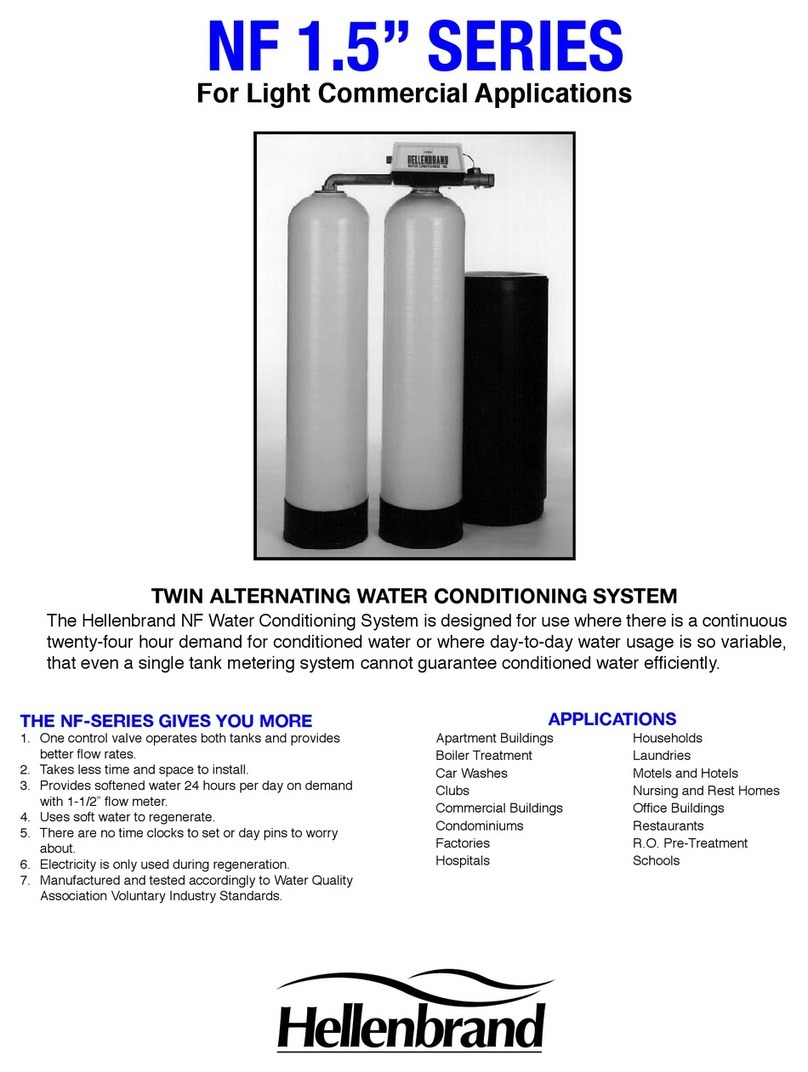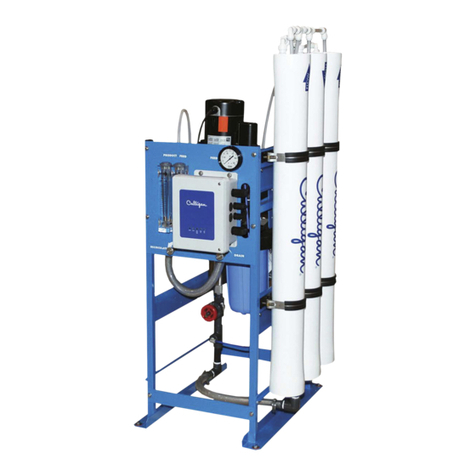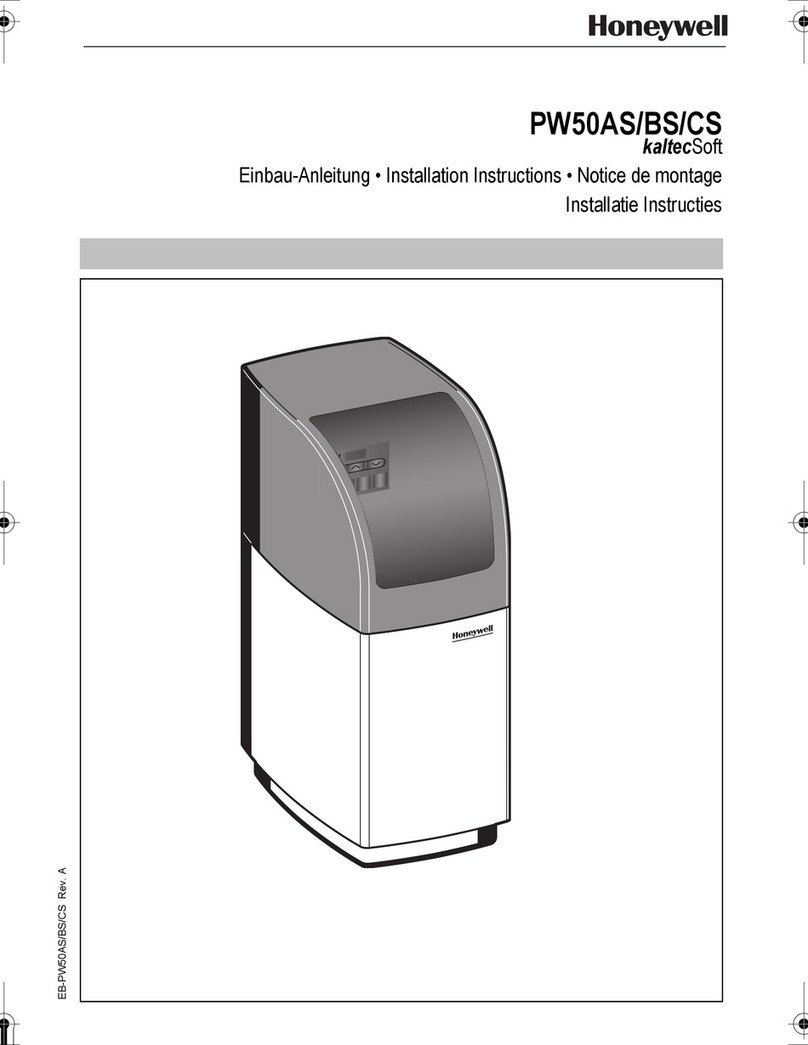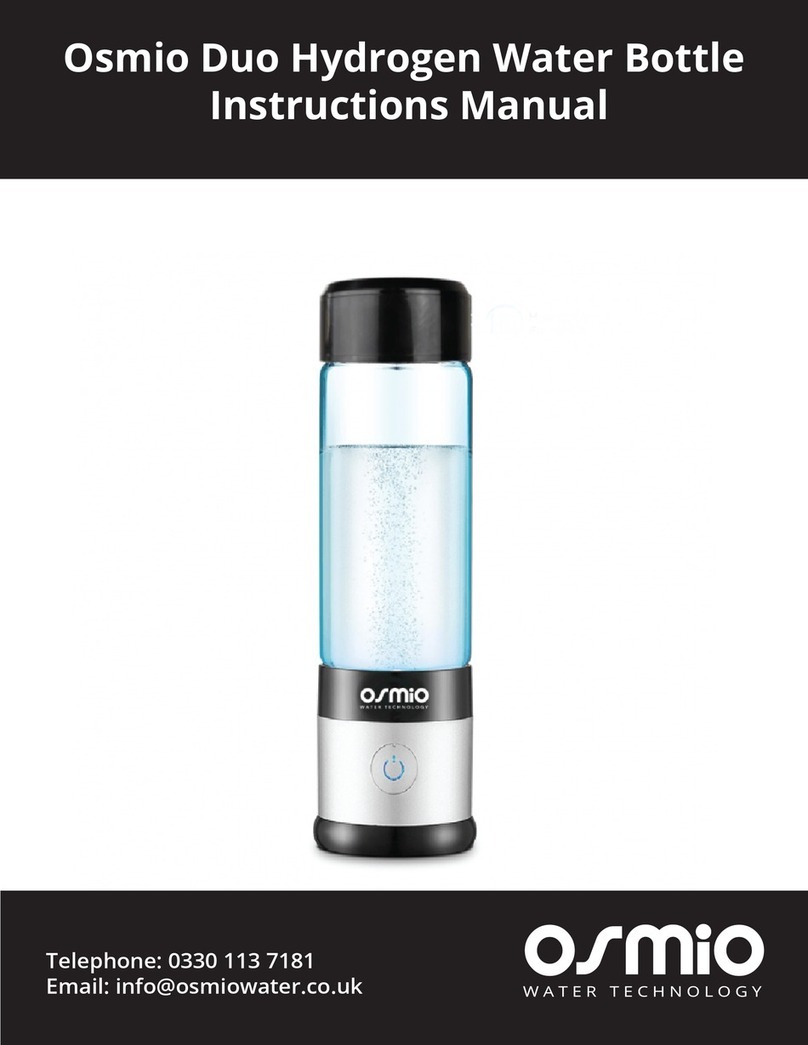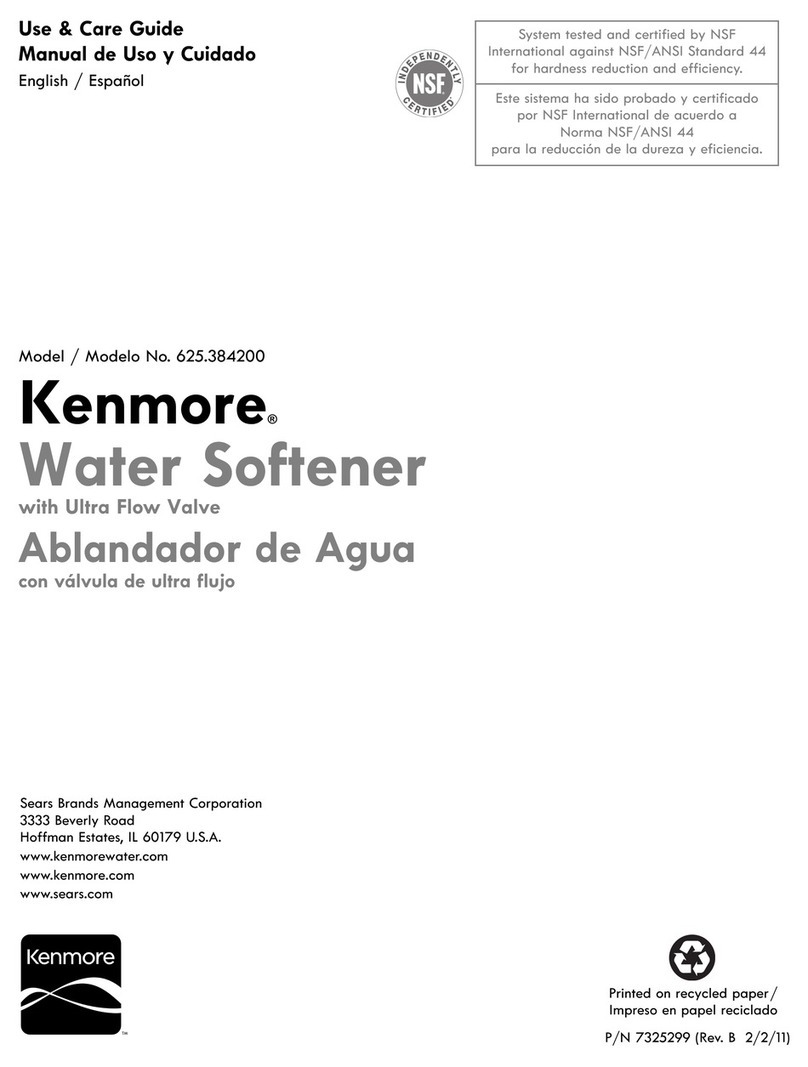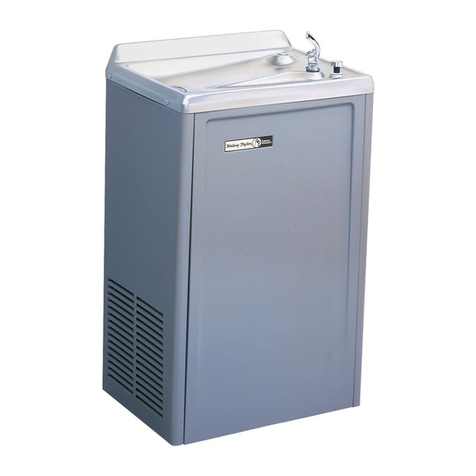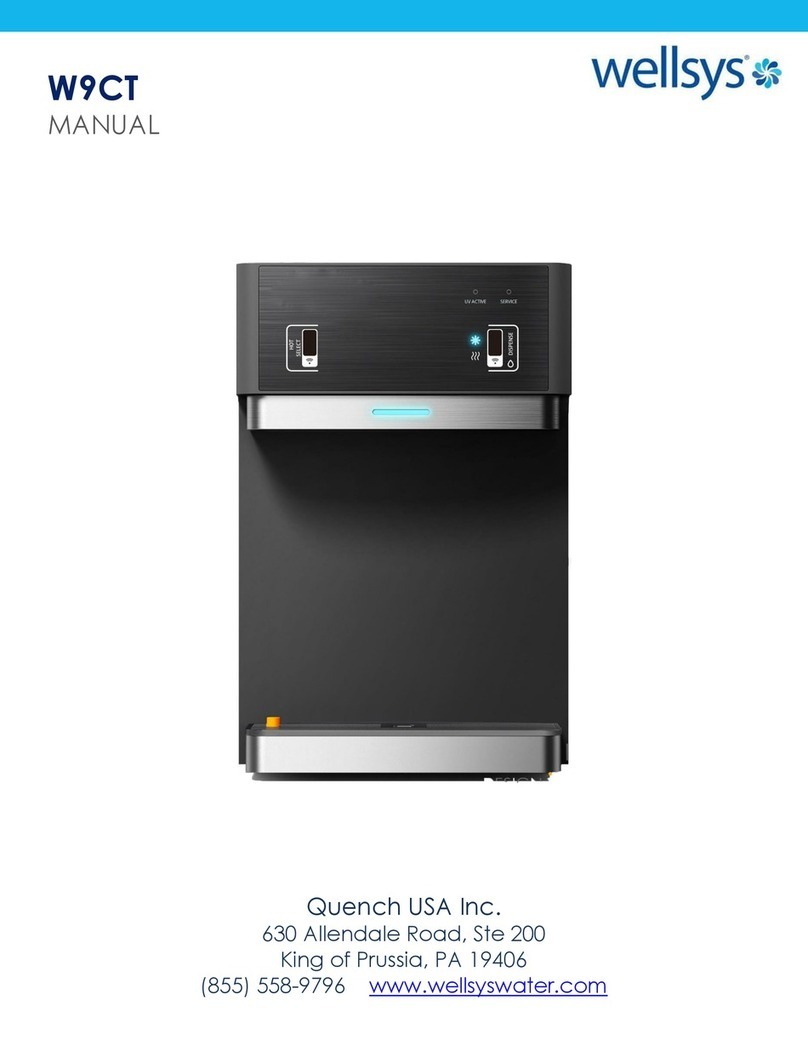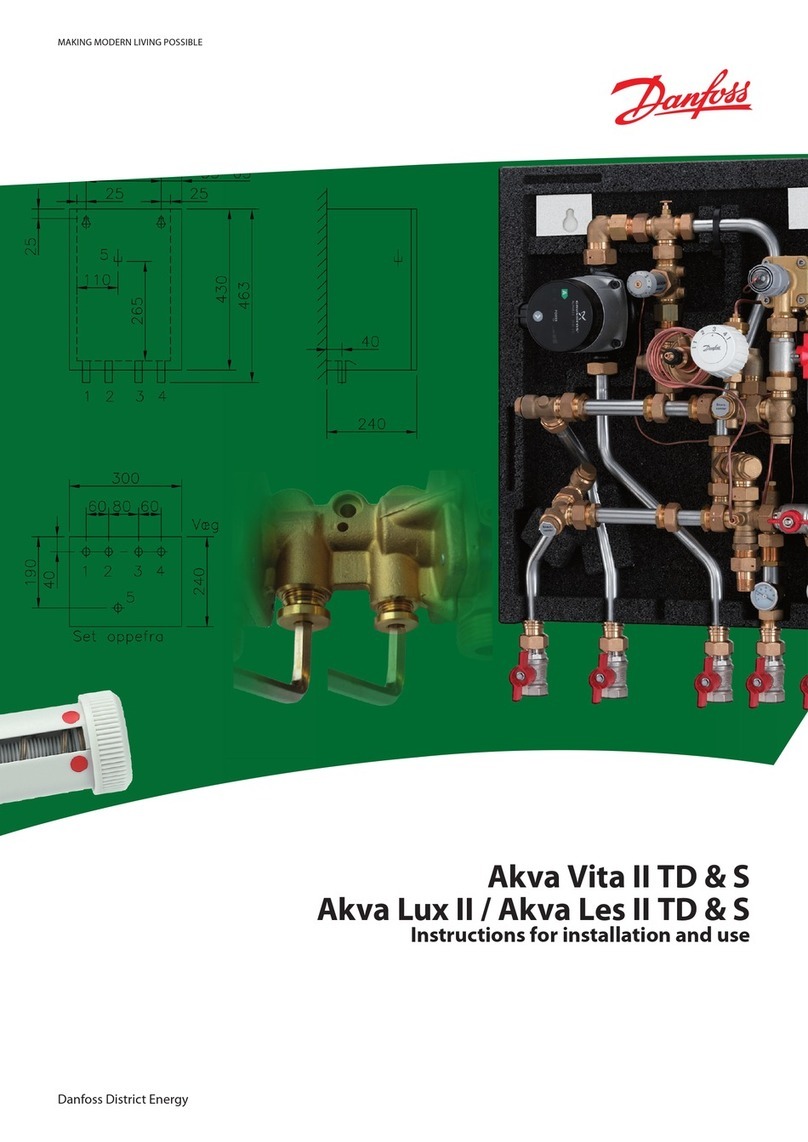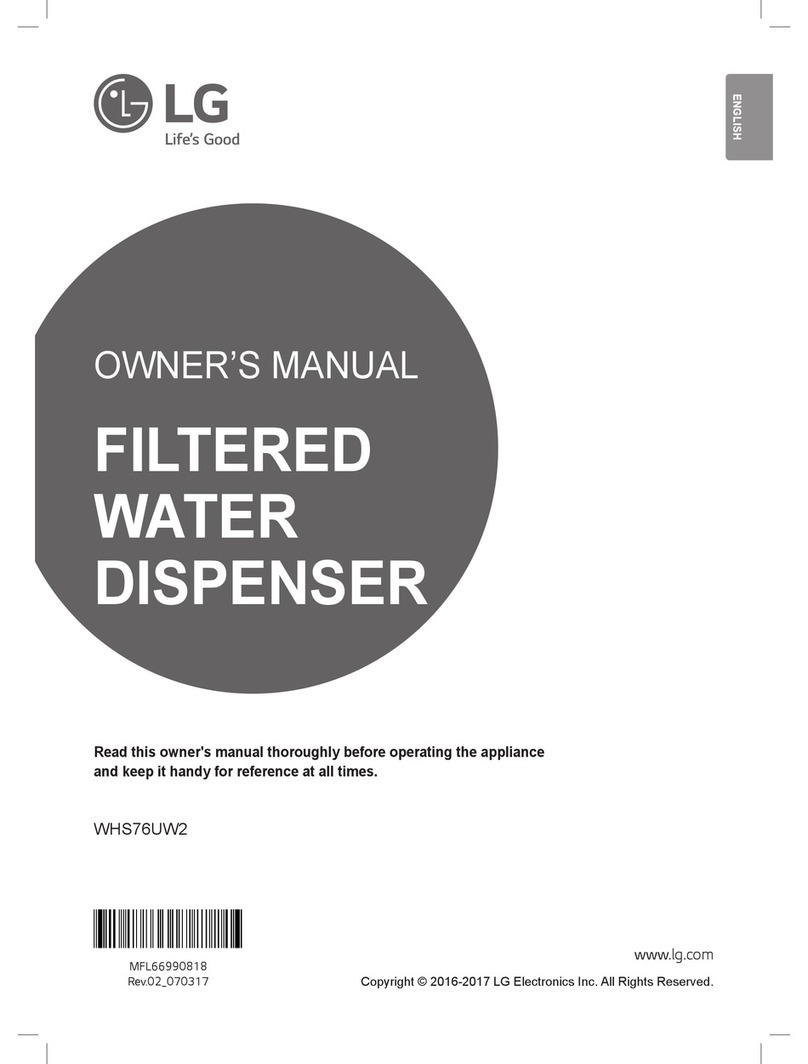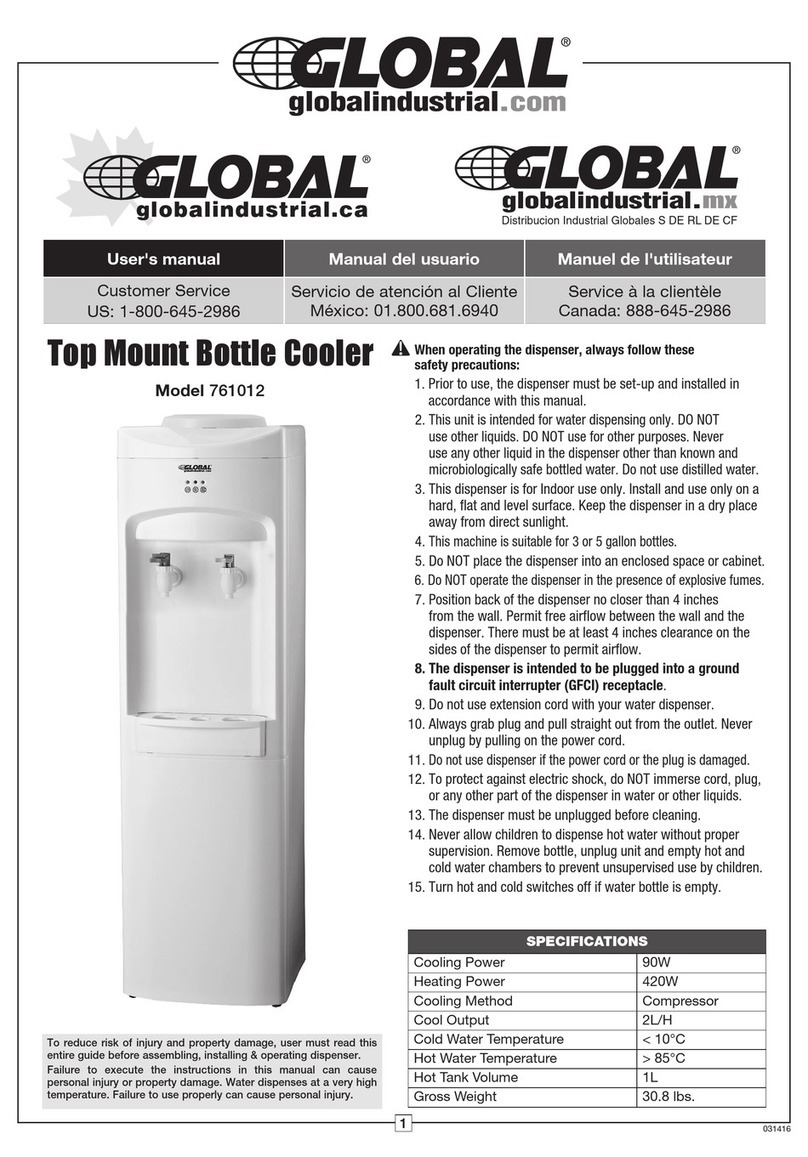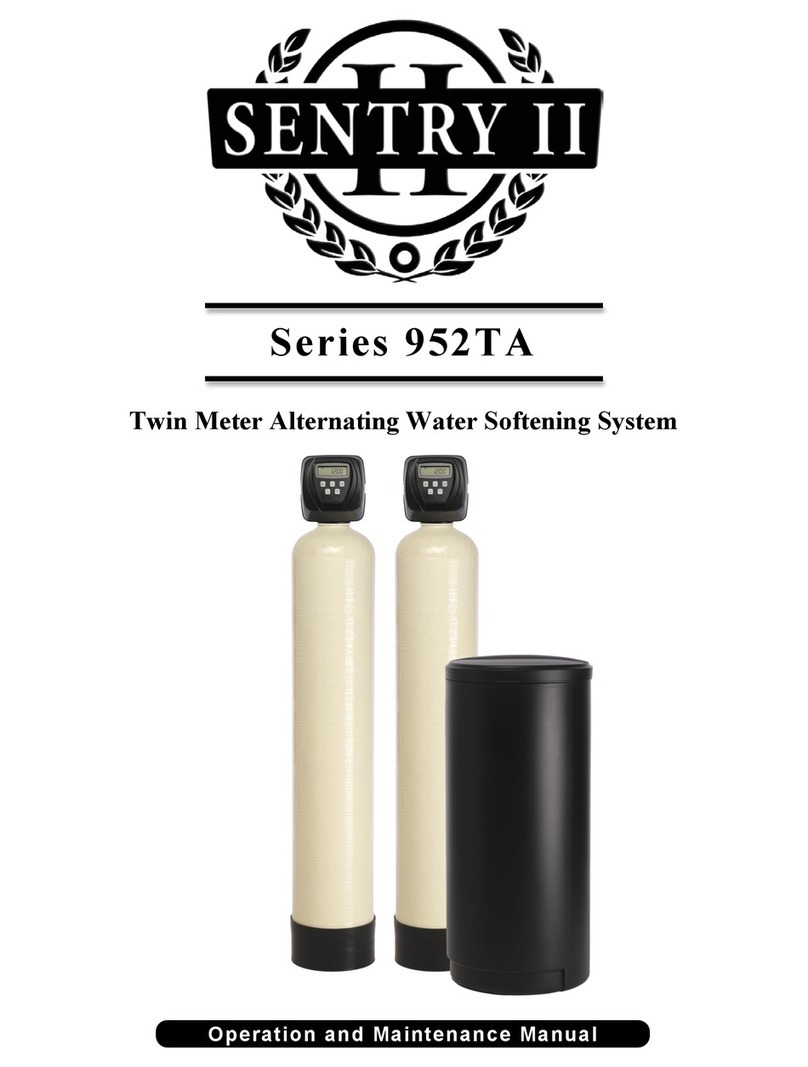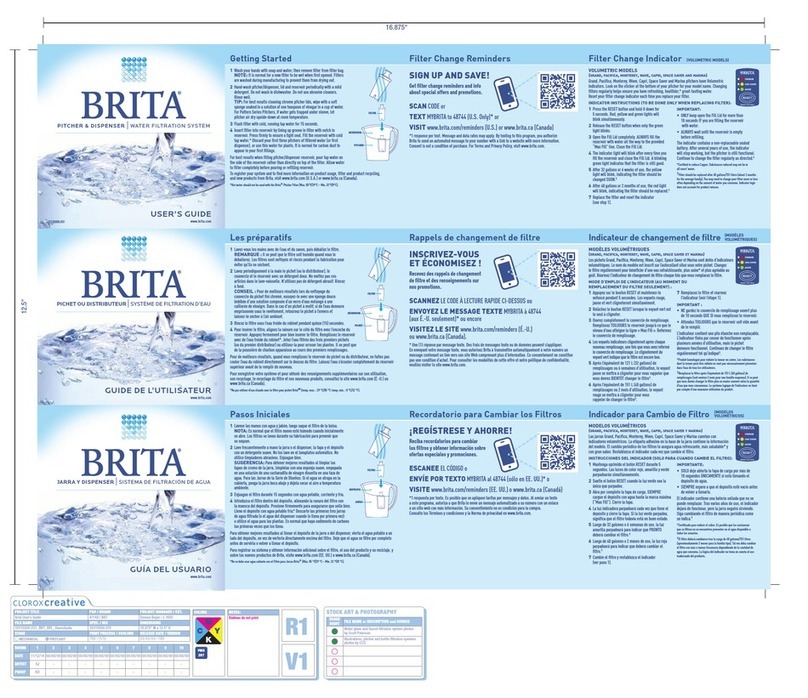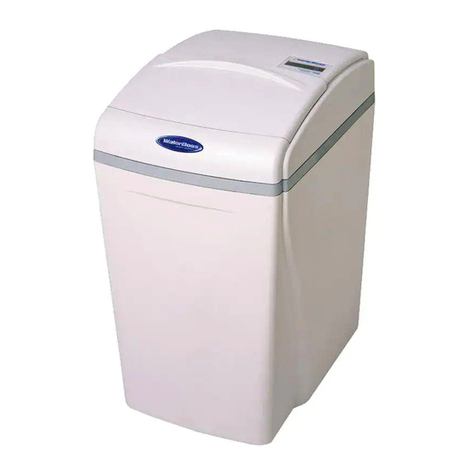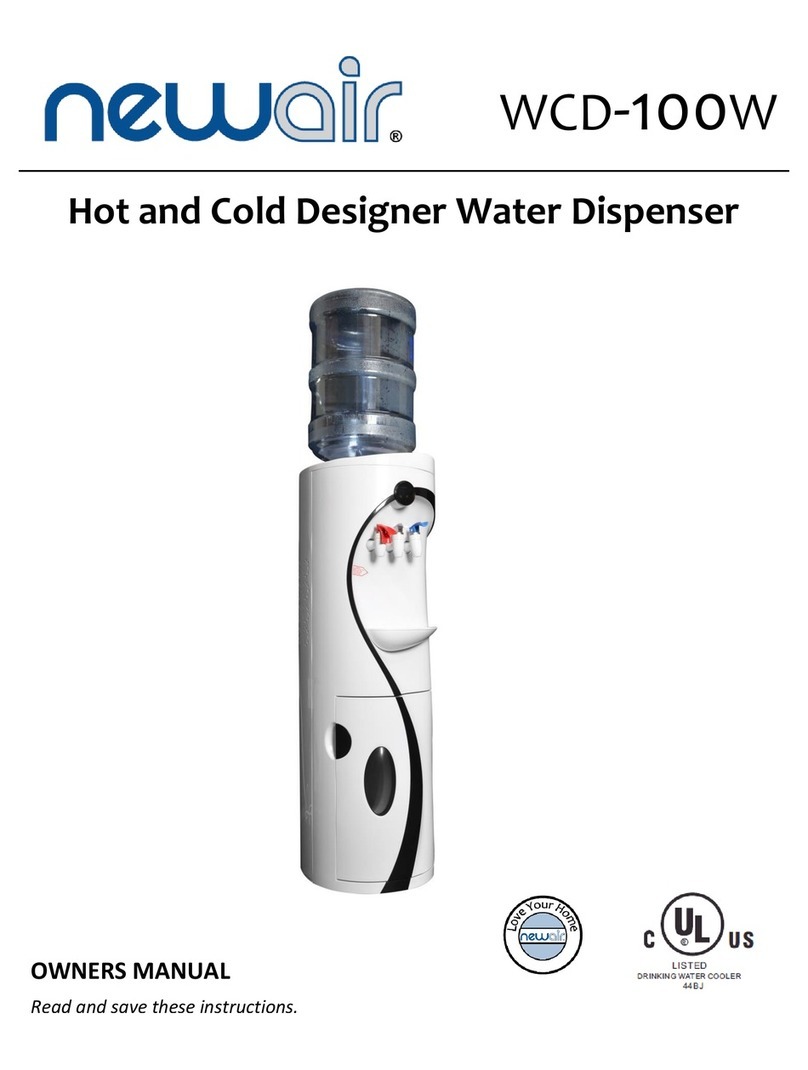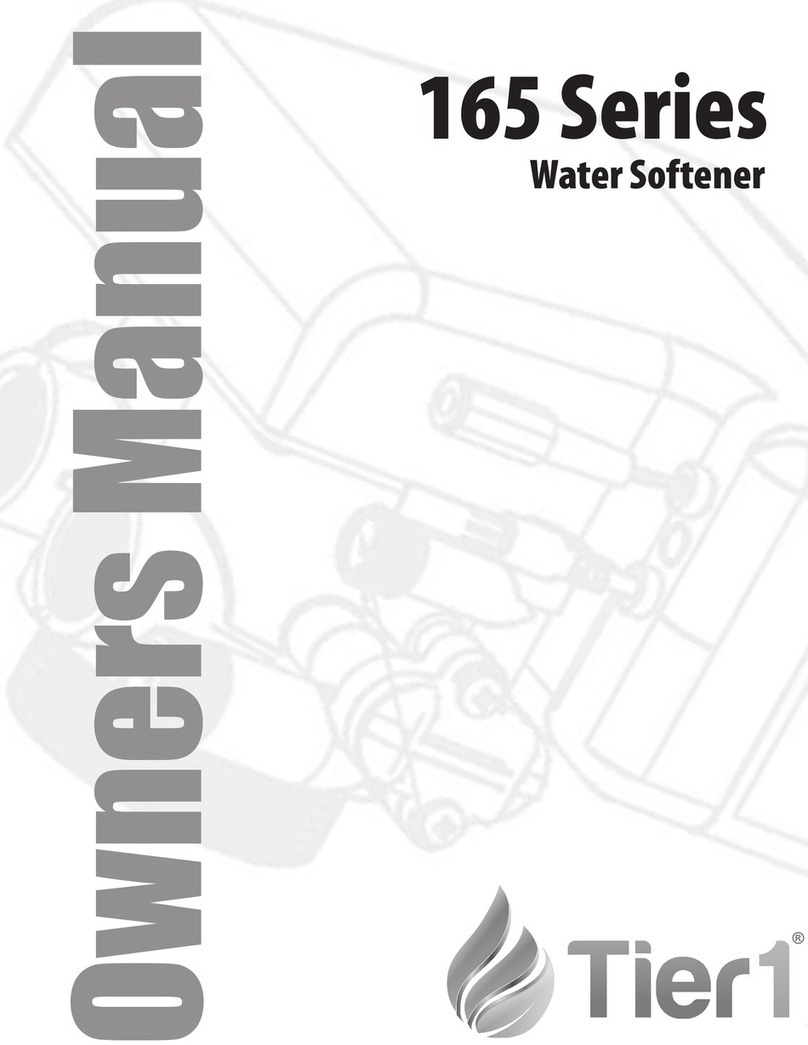
9
WATER SOFTENER DRAINING PROCEDURE
In cold weat er climates it is common for plumbing systems t at
are not in use to be “winterized“ or drained of all water to prevent
any damage t at may be caused by t e excessive expansion of
water w en it freezes. To prevent damage to a water softener
it must be properly drained also. A simple way to properly drain
or winterize a water softener is to use compressed air to force
all of t e water out of t e softener mineral tank. T e following
procedure will explain t e process:
1) Initiate t e softener into a manual regeneration cycle. After
t e refill cycle, advance control to backwas and allow it to
complete t e backwas cycle (t is will clean t e media) and
start into t e brine-draw cycle. Allow t e regeneration to
continue in t e brine draw cycle until t e brine is drawn out
of t e salt keeper and t e air c eck at t e bottom of t e brine
pick-up tube s uts off. At t is time no more brine is intro-
duced into t e softener and t e slow rinse process begins.
2) Turn t e water supply inlet and outlet valves off to t e water
softener as soon as t e air c eck s uts off and no more
brine is being drawn into t e softener (at t e beginning of t e
slow rinse process).
3) Unplug t e electric power leaving t e softener control valve
in t e brine draw cycle.
4) Disconnect t e brine tube at t e top of t e salt keeper and
force air into t e brine tube toward t e softener mineral tank
and control valve. T e air will force t e brine/water solution
t at was drawn into t e mineral tank out to drain t roug t e
control valve drain line. (An air compressor blow gun attac -
ment wit a portable air compressor works well.)
CAUTION: You do not want to apply any more pressure
t an necessary to force t e brine/water out of t e mineral
tank.
T e small amount of brine/water t at may be left in t e
mineral tank will not expand enoug to cause any damage
to t e softener w en it freezes.
If your softener is equipped wit an optional bottom drain on
t e mineral tank, you will ave to follow all of t e same
procedures wit t e exception of t e need for compressed
air. Wit t e brine tube disconnected from t e salt keeper,
raise it to a level above t e softener control valve and
temporarily secure it in t is position. Now open t e drain
valve at t e bottom of t e mineral tank and allow all brine/
water to drain from t e mineral tank.
CAUTION: If a ose is connected to t e drain valve to direct
t e brine/water to a floor drain be sure it runs downward and
is unobstructed. W en brine/water quits running at t e
drain, be sure to leave t e drain valve open until you start
t e system up again.
5) At t is time t e salt keeper as very little water left in it. W at
liquid is left in t e salt keeper is saturated brine, provided
t at t ere is still salt left in t e tank. Saturated brine will not
freeze solid and cause any damage and does not ave to be
drained any furt er from t e brine tank.
If t ere is no salt left in t e salt keeper w en t e system is
drained we recommend dumping all of t e water out of t e
brine tank at t is time. See brine tank cleaning instructions.
(#3 in miscellaneous section, below)
6) CAUTION: It is important at t is time to be assured t at t e
inlet/outlet water supply piping is properly drained. Depend-
ing on ow t e water supply piping was routed to t e water
softener control valve, a water loop or trap may ave been
created.
Sometimes drain valve(s) are installed at t e bottom of t e
loop to assure all water can be drained out. If not it may be
necessary to disconnect t e control valve from t e piping
system and open t e inlet/outlet valve(s) to allow all t e
water to drain from t e piping. T is s ould be done w en t e
rest of t e plumbing system is drained.
7) Draining or winterizing of your softener is complete. Refer
to t e start-up procedures on page 6 w en you are ready to
start your softener.
1. Salt Usage: See your water conditioning professional for a
recommendation on t e best type of salt for your application.
2. Salt Keeper Cleaning:
a. Remove brine tank cover.
b. Scoop out as muc old salt as possible.
c. Disconnect brine tubing from safety brine valve at brine
well.
d. Remove safety brine valve from brine well.
e. Place one and in brine well to old overflow nut and
remove 2 piece overflow.
f. Remove optional brine well and grid plate, if used, from
brine tank.
g. Remove any remaining salt and/or impurities from brine
tank.
. Using clean water and a brus or rag, wipe and rinse
inside of brine tank. Also wipe and rinse t e grid plate
and brine well.
i. Reassemble brine tank reversing steps c - f. Note: If grid
plate is used and it is damaged or cracked, replace wit new
one.
j. Put brine tank in place making sure t ere is no debris or
foreign material beneat it.
k. Reconnect brine tubing to safety brine valve.
l. Manually add 6 inc es of water to t e brine tank (or to
approximately 1” above t e grid plate, if used).
m. Add new salt. Important: Do not add t e old salt w ic was
removed earlier unless it is clean and not mus y. We
recommend using new salt.
n. Follow t e disinfection instructions found on page 8.
o. Put on brine tank cover.
MISCELLANEOUS

























